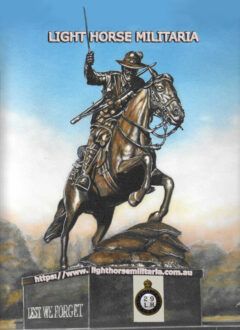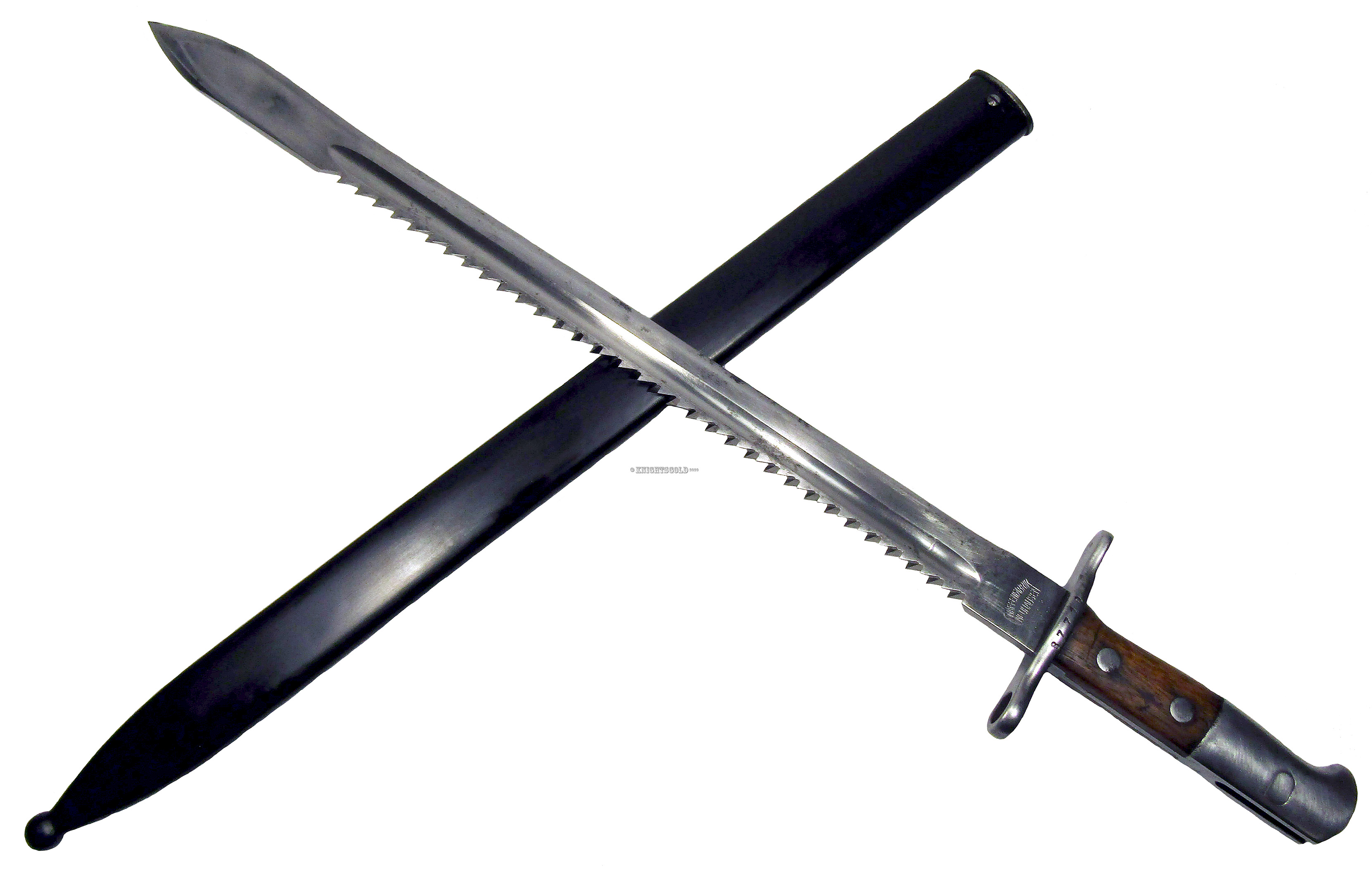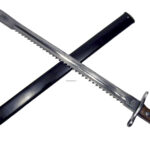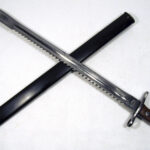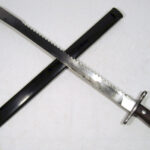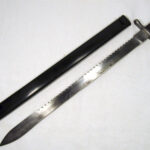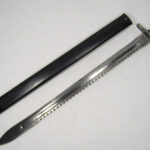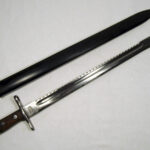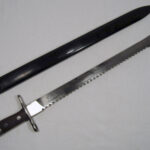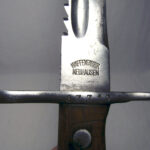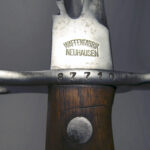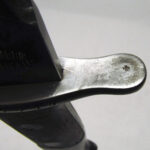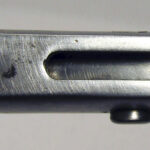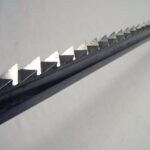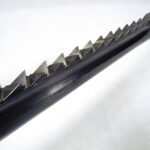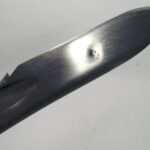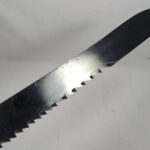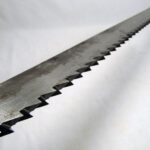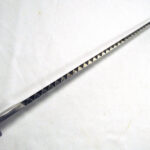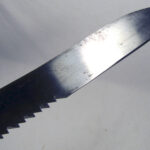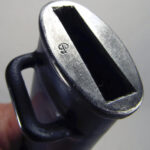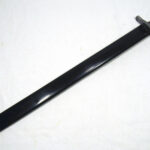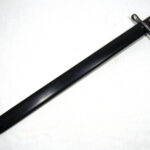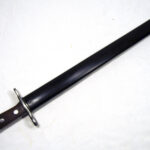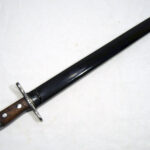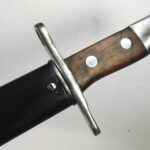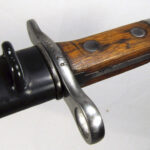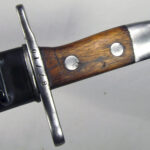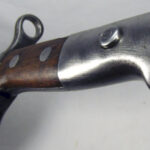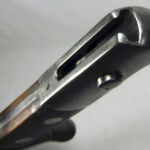©Debra.Elvery-Knight2024
FREE-POST with SIGNATURE & INSURANCE AUSTRALIA-WIDE / 1-DAY DISPATCH SERVICE / 30-DAY RETURN / MONEY BACK GUARANTEE
#Australian Law prohibits the sale to anyone under the age of 18. #The buyer accepts full responsibility for the sale and its use. #The sale of knives and other controlled items to minors in Queensland is prohibited, penalties apply, acceptable evidence of age may be required.
For your consideration, you are viewing an awesome piece of Military History, this bayonet is a Swiss M1914 Pioneer Waffenfabrik Neuhausen Saw-back Bayonet with a rolled steel Scabbard, this bayonet is for use with the Schmidt-Rubin M1911 carbine & (K31) M1931 Short rifle. Designated "Sägebajonett Mod. 1914" (Sawing Bayonet Model 1914), The Model 1914 differs from earlier saw-tooth models by the addition of a bulge at the end of the blade and is fullered on only one side. The Pioneer's or Engineer's bayonet were manufactured beginning in 1914, right through to WWII. This was made by Waffenfabrik in Neuhausen, which is a Swiss city very close to the German border and so many of these weapons were sold across the border and were used in both WWI and WWII. Switzerland declared itself neutral in both world wars, and had zero military involvement; reportedly, they did not supply the German military with any weapons, equipment, or accoutrements. This was issued to selected rank soldiers, such as Sergeants or Corporals. Issued to drivers for mounted or motorized field artillery such as the Howitzers. Horse transport soldiers were also issued to Pioneer or Engineer troops for tasks such as construction, combat or clearing the bush. Sawback bayonets were never intended for general issue nor were they intended to produce more devastating wounds than standard bayonets. Their purpose was solely utilitarian (as a saw), although saw-back blades were later issued to non-commissioned officers as a status symbol. The invention of barbed wire in the 1870s influenced the adoption of the saw-back bayonet. Adding sawteeth to the bayonet blade spine provided troops, who needed to clear barbed-wire obstacles or vegetation, with a dual-purpose tool. Although Britain and other countries flirted with the saw-back bayonet, Germany and Switzerland made the most extensive use of them. Germany issued saw-back bayonets extensively during the First World War. Switzerland issued saw-back bayonets to special troops, armed with the superb Schmidt-Rubin K31 Short Rifle, into the 1950s. This bayonet is exceptionally well made and saw-teeth extremely sharp with all metal parts in a bright steel finish. It has 2 piece contoured wooden grips attached by two large steel rivets, back flat and straight with T slot attachment, it has a long bird head pommel, with internal coiled spring press stud. The Handle/Hilt is 5" in length (including cross-guard) spatula lower guard and a high high-waisted muzzle ring with a 48 cm long double-edged blade (straight edge and saw-back) and it is fullered on one side only. There are 33 saw teeth on the left side of the blade, 32 on the right, in all sixty-five single teeth and finishes with a swell-point profile, (the blade is wider at the end than it is at the ricasso.) This comes with a rolled steel scabbard with a ball finial, and it has a steel throat with with raised bar with leather tongue. This scabbard has the Script-P mark which identifies the maker as "Paillard AG of St. Croix". Paillard was a diverse manufacturer producing an impressive assortment of products in its 160 years. Paillard AG started in 1814 as a watch-maker, later on, the Company branched out to start producing music boxes, radios, typewriters, record players, and the iconic Bolex motion picture cameras.# The makers and inspection marks are:
- RICASSO: Waffenfabrik Neuhausen
- CROSSGUARD: 87710
- SCABBARD: MOUTH: "P" Paillard AG
CONDITION
This bayonet is from circa 1910s and is in good condition for its age and use in warfare. The grips are in very good condition with no missing pieces, but has a few indent marks on one side and fit tightly to the tang, the release/lock button is in smooth working order. The 48 cm blade has a polished finish with an aged grey patina, with scattered spot stains and no pitting. The edge is not sharp and has a couple of flea-bite dings on the upper edge, the saw teeth are very sharp. The remaining metal on the cross-guards and pommel is also polished with some normal marks from use and an aged patina. The scabbard is in very good condition, it has a refurbished blackened finish, that is missing a couple of small chips of paint near the belt bar, the body has no dents and fits tightly together with the bayonet. The leather tongue is intact but the leather is showing some age# Please note that the photographs form part of the description; Super-sized photos are available for viewing in the eBay gallery, to show the finer details and conditions.- Photos do not show the actual size so please read the description page for the exact measurements.
- Colours may display differently depending on your computer and settings.
- The item in the photos is the one that you will receive.
- The lead photo has had the background removed with Photoshop, but all the original untouched photos are included in the listing for viewing.
- Any errors will be accidental and not intentional or purposely misleading.
WEIGHT & MEASUREMENTS: The item is measured in both centimetres and inches. All measurements are approximate only.
WEIGHT: 1079 gm. approximately unpacked. (Bayonet & Scabbard together)
BAYONET
- LENGTH: 60.2 cm / 23.70"
- WIDTH: 9.8 cm / 3.85" (at the crosspiece)
- DEPTH: 2.2 cm / 0.86" (at the pommel including the lock button.)
- MUZZLE RING DIAMETER MRD: 14 mm. Inner Diameter
- BLADE: 47.9 cm / 18.85" Length (not including handle)
- SCABBARD: 51 cm / 20.07" Length
08/24
